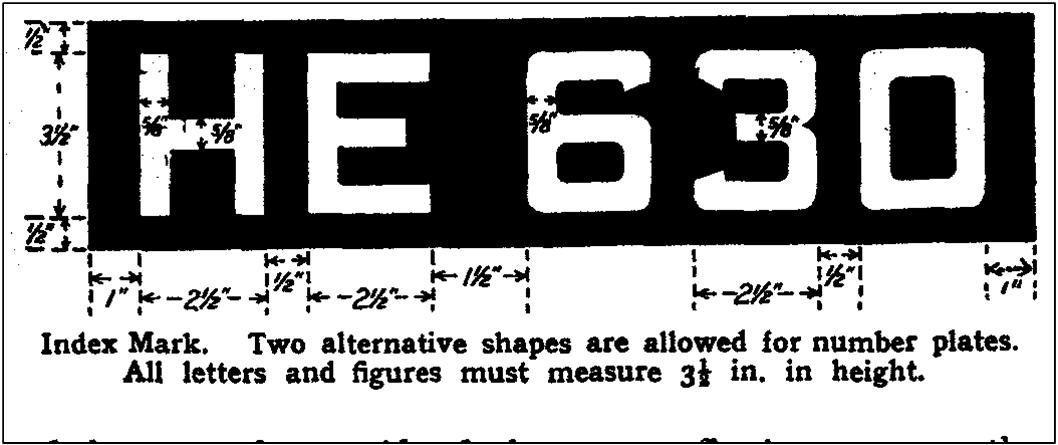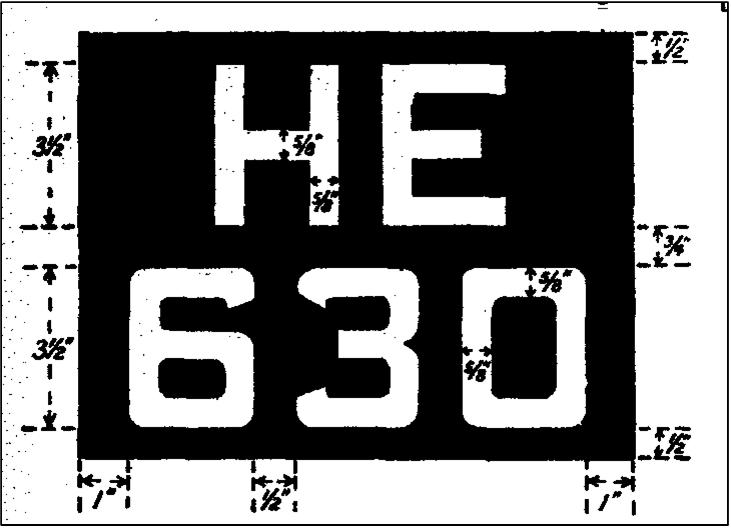
INDEX MARKS
from The Motoring Encyclopaedia of 1931 sourced by Bernard with many thanks
Index marks, number. plates, or identification marks are affixed to all motor vehicles licensed to be used on the public highway. They are intended purely to identify the car and give indication of the owner, since an application for an index mark necessitates the registration of the name of the person registering the car and presumably responsible for its use or misuse.
The mark is in
the form of a letter or letters and a number. The letter or letters indicate
the authority issuing the index, mark, and the number is the rotational number
of cars registered by that authority under that letter or letters. A new index
letter is adopted when the number of vehicles registered under one index letter
or combined letters has reached 9999. The issuing of an index mark is subject
to the payment of the tax.
Marks (as receipt for taxes) are issued by various local authorities, comprising county and county borough councils, the London County Council and the Scottish counties and large burghs such as Edinburgh and Glasgow.
The index marks must be in the form of painted plates, a flat unbroken vertical portion of the surface of the body of the vehicle, or a plate of cast or pressed metal having raised letters and figures. The letters and figures must be incapable of detachment from the plate, and a plate must be readily distinguishable from the front or behind the vehicle.
Painting the number on the surface of the vehicle is permissible only on vehicles in excess of 3 cwt. unladen weight.
Two shapes of
plate are allowed, as shown ' in the two diagrams. In one the index mark is
above the registration number. In the - other the number follows it on the same
line.
All letters and figures must be 3½ in. high and every part of every letter or figure must be 5/8 in. broad, and the total space of each letter or figure except I and 1 must be 2½ in. The space between adjoining letters and between adjoining figures must be ½ in., and there must be a margin between the nearest part of any letter or figure and between the top or bottom of the black surface on which the letters and figures are inscribed of 1/2 in., and between the nearest part of any letter or figure and the sides of the black surface a margin of 1 in.
Where the letters are above the figures, the space between the upper and lower lines must be ¾ in., and where the letters and figures are in line the space between the last letter and the first figure must be 1½ in.
Letters must be white on a black ground. Unpainted aluminium figures are accepted as white if their background is black.
The number plates must be placed one at the front and one at the back of the vehicle, and the driver must do all he can to prevent them from being obscured by dirt, luggage or straps, and to ensure that the rear plate is so illuminated that it can be read easily at night. If he fails to show he has taken all reasonable steps to keep them clear, he will be liable to a fine not exceeding £20 for a first offence and to a fine not exceeding £50 for subsequent offences.
On motor cycles the front plate may be placed parallel with the front wheel. The rear number plate of a motor car must be illuminated at night, but a motor cycle may have its front number plate illuminated instead. When a vehicle is being towed, the towed car must have its back number plate obscured and must show instead at the back the index mark and registration number of the car which is towing it. Vehicles with trade licences do not require to carry any number plates in addition to those supplied with the licence. See Licensing and Registration.